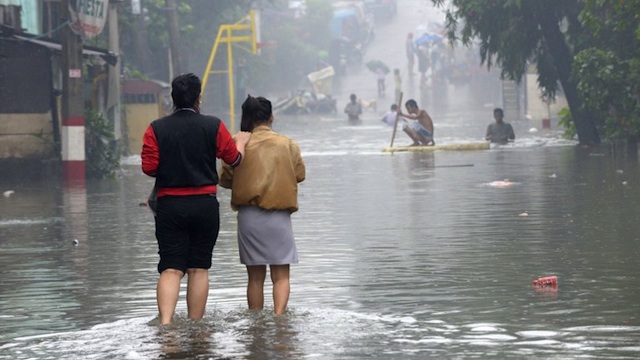SUMMARY
This is AI generated summarization, which may have errors. For context, always refer to the full article.

CHIANG MAI, Thailand – Asia’s flood-prone megacities should fund major drainage, water recycling and waste reduction projects to stem deluges and secure clean supply for their booming populations, experts said Sunday, May 19.
Rapid urbanization has heaped pressure on water resources and drainage systems across Asia, leaving low-lying areas exposed to massive floods such as those that paralyzed Jakarta and Manila last year and central Thailand in 2011.
“The lust for land — driven by urbanization — is narrowing drainage across most Asian cities so even small amounts of rainfall can cause massive problems,” Kulwant Singh of the UN-HABITAT said at a water security forum in Thailand.
Citing the estimated $45 billion cost of the kingdom’s catastrophic floods in late 2011, Singh said “there should be no question” of governments paying for big infrastructure projects to protect cities.
“If ten years of wealth is suddenly wiped out, it makes sense to spend a fraction of that on long-term prevention,” he added, urging consideration for ambitious prevention schemes.
Flood management has been in focus in Thailand since the 2011 floods, which inundated swathes of the country for months, deluged parts of the capital and tool a heavy toll on its lucrative manufacturing base.
One ambitious proposal by Thailand Underground Tunnelling Group (TUTG) would see two vast tunnels built beneath Bangkok to siphon off water from heavy monsoons.
Echoing a two-tiered ‘smart-tunnel’ through the Malaysian capital Kuala Lumpur, the passage could also hold an underground road that could be closed to take water in the event of a major flood.
The scheme, which would cost around $3.5 billion, could return excess water to the city’s shriveling groundwater reserves in an aquifer layer under the city which is in part responsible for it gradually sinking.
“Bangkok is sinking… if we can store water (from heavy rains) we can also recharge the aquifer,” said Zaw Zaw Aye of TUTG.
Other sustainable solutions to the water problems facing the region’s booming cities include recycling more water — something successfully pioneered by Singapore — and stemming leaks and other waste.
“We try to collect every drop that falls from the sky; collect every drop we use and try to use every drop more than once,” said Chew Men Leong of PUB — the city-state’s water agency.
One third of Singapore’s water is currently recycled, he added.
The Asian Development Bank last month warned that nearly two thirds of people in the Asia-Pacific region have no clean, piped water at home despite the region’s strong economic growth, blaming poor management and a lack of investment in infrastructure rather than short supplies. – Rappler.com
Add a comment
How does this make you feel?
There are no comments yet. Add your comment to start the conversation.